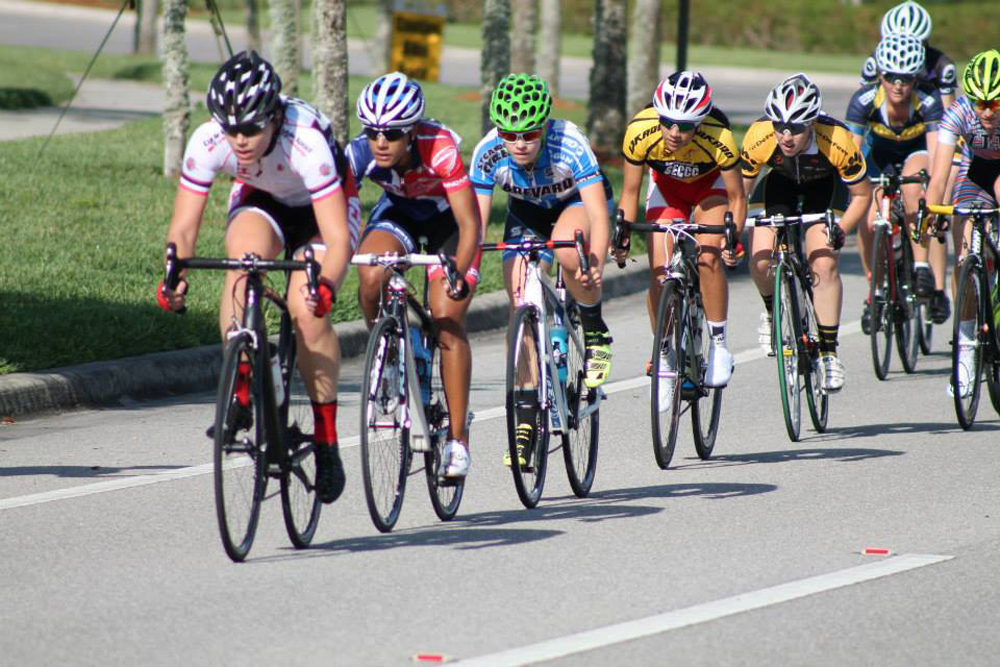By Kira Maicke

“Rule #1: Obey the rules.” While great for a fun read, “The Rules” according to the Velominati should be taken with a grain of salt. When riders, particularly road cyclists, cite the rules, they are often referring to those that help paint a mental image of the stereotypical “Euro” road rider.
“Tan lines should be cultivated and kept razor sharp. Shorts should be black. Shorts and socks should be like Goldilocks (Not too long and not too short). Eyewear should be cycling specific.” etc…
This sport has been exclusive and elitist for far too long. Wear your jean shorts and flannels! Sport your aviators with an aero road helmet! Just get out and enjoy the ride!
There are, however, some important “rules” to consider when cycling in groups. Road racing and group rides share similar etiquette to ensure everyone is safe and has fun.
“Hold your line.” Be consistent and predictable. Riding erratically in a large group can be very dangerous. If you notice road or trail debris up ahead, alert other riders by pointing at the object, or waving everyone over to a certain side to avoid the object. When closely drafting, the riders following cannot see upcoming obstacles quickly enough, so the riders up front need to point them out. Signaling, in general, is very important. Alert other riders with hand signals when changing direction, slowing, or stopping. For riders not yet comfortable with one handed riding, verbal cues will suffice. Hand signals also help to let cars know which direction the group is heading. This is not quite as necessary in a race scenario where the courses are typically closed to cars, but for group rides, signaling is a must.
“Don’t overlap wheels.” Overlapping wheels is when the front wheel of the trailing bike overlaps the rear wheel of the leading bike. This is dangerous, especially if the leading rider has to swerve quickly to avoid an object. If the rider swerves in the direction of the trailing rider’s front wheel, this will very likely result in a crash.
“Do your time in the wind.” This one is a little more relevant for the roadies, but can also apply for open, windy trails. Pacelines are a great way to save energy and ride faster and farther than you could on your own. Single and double file pacelines are both common for road group rides. On very windy days, rotating pacelines are a popular choice. With a rotating paceline, the lead rider(s) are not in the wind very long at all. The line is constantly changing. As soon as the rider gets to the front of the paceline, they continue to ride left and ride next to the line of riders until they are back at the end of the line, shielded from the wind. Often when riding in a double paceline, the two front riders will pull for a longer amount of time and pull to the sides after a couple of miles to draft off the group to recover.
Most of the rules and standard etiquette highlighted so far have been pretty road oriented, but there are some rules and guidelines to consider when riding trails as well. When riding multidirectional trails, the downhill riders must yield to the uphill riders. When trails are directional, be sure to ride them in the designated direction. Downhill only trails will have riders bombing down expecting not to see anyone climbing, and if someone is climbing up a downhill-only trail, this can cause a dangerous wreck.
Ride trails and features within your ability. If you plan to work on a specific section of trail or a certain feature, be sure others can see you. Do not stand on the landing of a jump, or push your bike back up the trail without knowing the trail is clear up top. Yield to faster riders. I know I do not have as much fun when someone is right on my wheel, and I am sure the rider behind would have more fun if they could ride the trail at their speed. Even in a race situation, if you can tell someone is itching to go by, it is proper etiquette to let them pass. As hard as that is when you are racing against the clock, or in a pack of XC racers, if someone is able to pass, they are having a better race than you.
Whether on the road or on the trail, in a race or just riding with friends, following these guidelines will ensure everyone has a safe and enjoyable riding experience.
Kira has been racing bikes since 2010. She started racing road bikes for the University of Georgia and raced at the elite level until transitioning to mountain bike racing in 2016. She currently races downhill, and can usually be found sitting on chairlifts in Utah, Idaho, Wyoming and Montana.


Velominati “The Rules” are to be taken as instructive humor. They are not actual rules, exclusive, elitist or European.